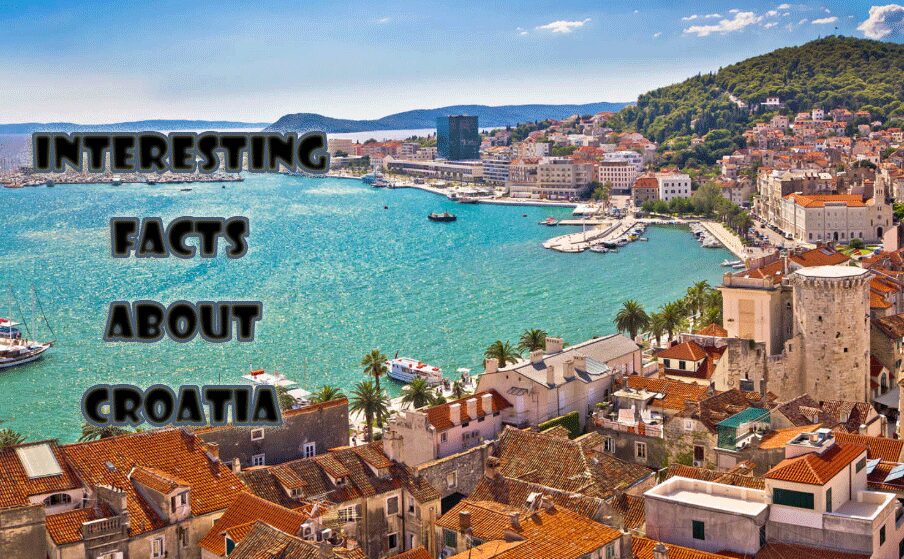Briefs to approach Interesting facts about Croatia differently through anecdotes, highlights, discoveries and inventions:
30 Interesting facts about Croatia
Country of origin: Croatia
- The tie whose name could come from the word Hrvat (pronounced keurvate), which means ‘Croatian’. In the 17 th century, Croatian soldiers recruited by King Louis XIII wore a scarf around his neck; this symbol of fidelity was handed over by the elect of their heart before the departure for the war.
- The mechanical pen with integrated reservoir (or ink pen) was invented by Eduard Slavoljub Penkala , from Zagreb, who filed the patent in 1907. This revolutionary innovation in writing instruments was an immediate success. Penkala pens are still produced today.
- The technique of fingerprints or vucetic method, named after the inventor Ivan Vucetic , Croatian criminologist of the late nineteenth century.
- The torpedo developed by Ivan Lupis in 1866 in Rijeka, leading to the questioning of military strategies.
- Electric lighting, radio, hydraulic power stations, radar. .. were born thanks to the work of Nikola Tesla (1856 – 1843) the inventor of genius in the field of electrical energy . This science giant, father of AC has filed more than 300 patents.
- Thanks to his inventions, the hydroelectric plant on the Krka River, built in 1895 and commissioned 2 days after Niagara, supplied electricity to the city of Sibenik well before other cities in Europe.
- A Nikola Tesla memorial is dedicated to him near the town of Gospic in the Lika region.
Interesting facts:
- The first football monument in the world , officially recognized by FIFA in 1969: a 2nd century tombstone near the present-day town of Trilj in the Split region, on which the boy’s sculpture the late Roman had a balloon almost identical to the current footballs. The Split Fish Market is built directly next to a phosphorus well, which is why it is the only fish market in the world where flies are absent.
- The 1st French-Croatian dictionary was published in 1812, under the Napoleonic period.
- The Croatian currency is called the kuna,in reference to the kuna animal – in French the marten – whose skin was a means of payment in the Middle Ages.
- The Museum of Malacology in Makarska , Central Dalmatia, has the world’s largest collection of shells and snails.
- Rab 1936: first naturist beach in Croatia . The King of England Edward VIII and his wife obtained permission from the local authorities to bathe naked in Kandarola Bay, still called ‘English Beach’ by some inhabitants.
- Froggyland , frog museum in Split. A rather special museum has just opened in Split, it presents a little more than 500 specimens of stuffed frogs, put in situations of the daily life of humans: frog at school, frogs playing cards, frog at the dentist. ..
- Cricket was introduced in Croatia by an English naval captain based in Vis in 1811. The Vis team still exists, there are only 2 other teams for this little-known sport in Croatia: Zagreb and Split .
- The first visit of the blue cave to Vis / Bisevo was organized in 1885 by an Austrian tourism agent from Vienna.
- The bear refuge in Kuterevo (Lika region): it was created to welcome orphan bears. These bears would be unable to survive in the wild. At the refuge, they will spend their lives in an environment recreated close to natural living conditions. This shelter is run by volunteers.
- Zadar and the tradition of fishing : in ancient times, Zadar provided Rome with fish with delicate flesh, under Venice it is salted sardines that were delivered and today tuna are raised to be shipped to Japan.
Iconic Brands the ‘made in’ Croatia:
Vegeta : the national culinary aid in most recipes and present in all kitchens. It is a mixture of dehydrated and salted vegetables. This small blue package is available in various containers and the range expands to different uses: fish, grilled meat, salads.
Borovo : shoe brand born in 1931 in Vukovar and whose success goes beyond the borders, worn by the tennis line. Handmade, natural materials like rubber, cotton, leather and soft price. Featured in Vogue magazine in summer 2016!












